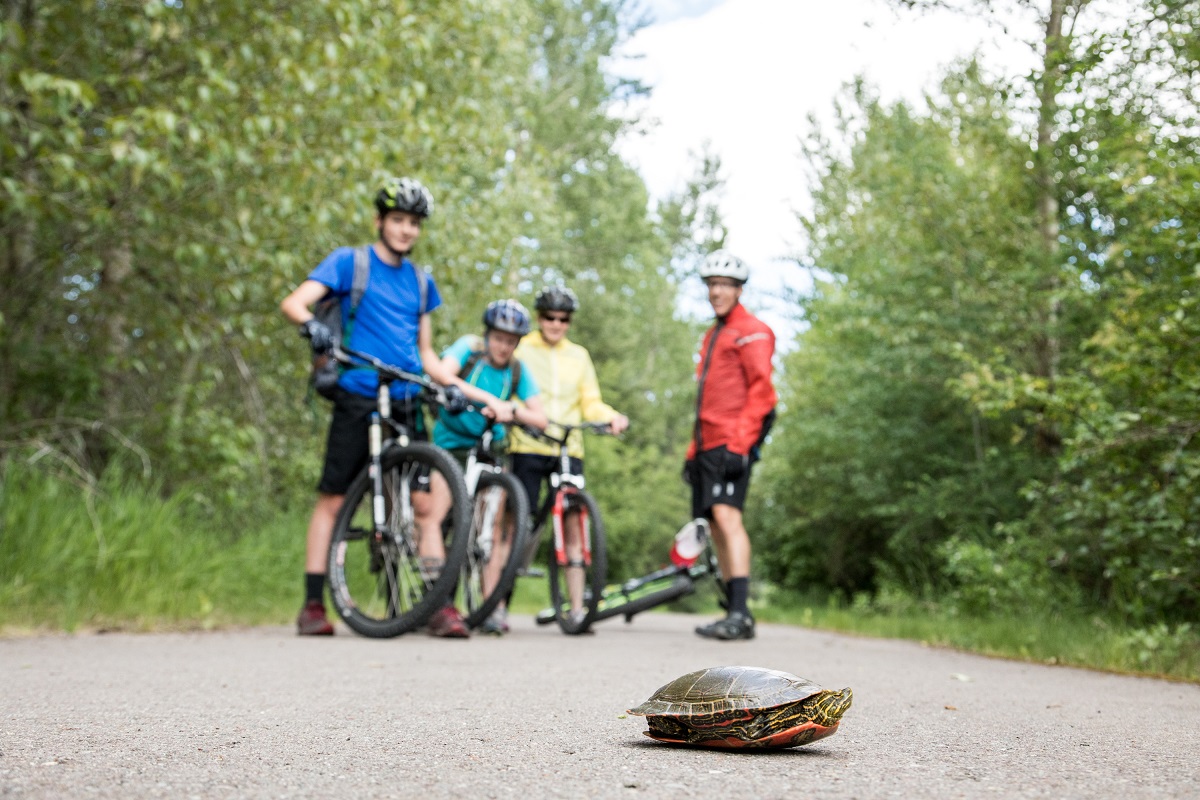What You Need to Know About Touring Terrain
Learning the terrain, or type of surface, you prefer for your bike tour will help immensely when it comes to picking a route.
Some people might think that they’re confined to one terrain or another due to the type of bike they have. Keep in mind, however, that it’s not overly difficult to use your mountain bike for road touring or to put wide, knobby tires on a touring bike for some types of dirt touring. A few tweaks to your existing bike might open a whole world of terrain possibilities.
Pavement
Paved roads often provide the smoothest, easiest riding surface. The catch is that you share it with cars and trucks, the biggest danger to a touring cyclist. Roads with wide shoulders and low traffic are the safest road option for bicycle touring. Blacktop makes for a super smooth ride while chip seal and rumble strips prove to be the roughest and most unforgiving of paved surfaces.
Rail Trails
Rail trails are abandoned railroad grades that have been repurposed into recreational pathways. Some feature hard surfaces of cement or blacktop, while others are covered with crushed limestone or another natural material. These trails provide some of the easiest (trains required low gradients) and safest (cars not allowed) cycling conditions you’ll find anywhere. In general, there is no better venue than a dedicated rail trail for introducing new cyclists and kids to the joys of bicycling and bicycle travel.

Some 31,000 miles of rail trails and similar multi-use trails exist in the U.S., with another 8,000 miles on either the drawing board or the wish list. They range from long, like the 219-mile Cowboy Recreation and Nature Trail in Nebraska and the 239-mile Katy Trail State Park in Missouri, to hundreds that are shorter but no less sweet. It is with good reason that nearly four dozen of the rides featured at BikeOvernights.org are found under the category heading of rail trails.
Dirt
Dirt is a catchall for any terrain that isn’t paved. Within the realm of roads, dirt can mean a well-maintained dirt road that meanders through the countryside. But it can also be an old forest service road that’s been rutted out by spring runoff or turned to washboard by logging trucks. The quality of the surface can make a big difference in how far you can travel in a day and how difficult the riding can be.
Also falling into the category of dirt are trails. You might hear the terms doubletrack (probably an old, unused road) and singletrack thrown around, and they’re exactly what they sound like — a doubletrack often has two parallel tracks, making the trail wider, while singletrack is one track, sometimes just wide enough for a bike and its person. On this type of terrain, you’ll probably be more comfortable on a mountain bike of some sort and will typically need more technical bike handling skills to safely navigate a dirt trail.
Depending on where you are (mountains, hills, or plains), dirt riding is slower than paved, sometimes more strenuous, but often sees less traffic. If you’re interested in dirt touring, keep in mind that 35-50 miles on rough surfaces are equivalent in difficulty to approximately 50-70 miles on pavement.
Picking Your Route
Adventure Cycling has developed and mapped routes on each of these terrain types. Some of our routes, especially the longer ones, connect various trails and roads together, creating safer and scenic routes for cyclists. For those interested in guided tours, we offer dirt, road, and rail trail tours, some being supported and others self-contained.


